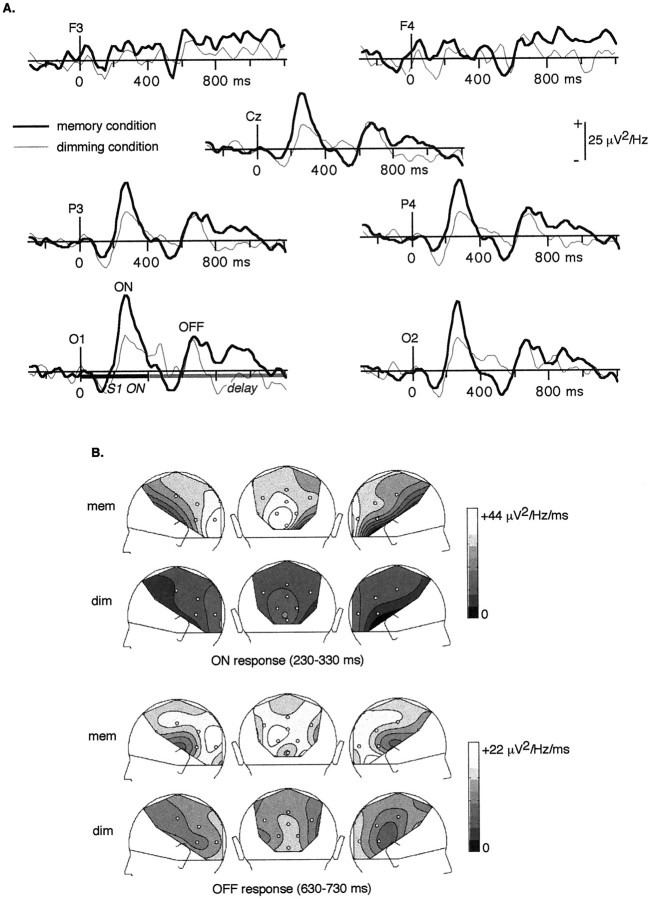Fig. 3.
A, Energy of the mean activity between 24 and 60 Hz, grand average across subjects, in the memory (thick line) and in the dimming (thin line) conditions. A first peak of enhanced γ-band activity appears at ∼280 msec (ON). It is significantly stronger in the memory than in the dimming condition. An OFF response can be observed at ∼680 msec (e.g., 280 msec after S1 offset); it does not show any significant difference between conditions. Later on, during the delay, a sustained γ-band activity appears in the memory condition only, mainly at left posterior electrodes and bilaterally at frontal electrodes. It tends to decrease before the end of the delay.B, Topographical maps of the 24–60 Hz energy (left, back, and right views of the head) averaged between 230 and 330 msec (ON response), and between 630 and 730 msec (OFF response). In both conditions, the ON response is maximum over occipital electrodes and decreases smoothly until the frontal sites. It is not only enhanced but also lateralized over the left hemisphere in the memory condition. The topography of the OFF response is less clear-cut; it tends to be maximum over occipital sites also. No tendency for lateralization of the OFF response could be found in any condition.

